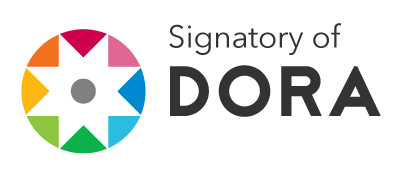Varroa destructor in Africanized honey bees in Brazil: genetic and reproductive profile
DOI:
https://doi.org/10.13102/sociobiology.v69i1.7340Keywords:
Acari, Apidae, bee pathology, parasitic mite, varroosisAbstract
The mite Varroa destructor is one of the most studied parasites in apiculture, and its genotype variation is a key factor for the severity of infestation in bee colonies. Here we report the genetic and reproductive profile of mites from 14 Brazilian states with different geographic and climatic conditions. We performed PCR to amplify a fragment of the COI gene and differentiate the haplotypes using restriction enzymes. The K haplotype was widely prevalent in the studied sites, while the J haplotype was found only in four municipalities. We also observed both haplotypes (J and K) coexisting in the same colony, a fact unprecedented in Brazil. Infestation levels were low (0.33 to 15.3%). The reproductive potential showed wide variation (0 to 1.5), indicating that even with the massive presence of K haplotype, environmental and biotic factors related to Africanized honeybees may be responsible for maintaining the mite under low levels in Brazil.
Downloads
References
Anderson, D.L. & Fuchs, S. (1998). Two genetically distinct populations of Varroa jacobsoni with contrasting reproductive abilities on Apis mellifera. Journal of Invertebrate Pathology, 37: 69-78. doi: 10.1080/00218839.1998.11100957
Anderson D.L. & Trueman, J.W.H. (2000). Varroa jacobsoni (Acari: Varroidae) is more than one species. Experimental and Applied Acarology, 24: 165-189. doi 10.1023/A:10064 56720416
Bacha-Júnior, G.L., Felipe-Silva, A.S. & Pereira, P.L.L. (2009). Taxa de infestação por ácaro Varroa destructor em apiários sob georreferenciamento. Arquivo Brasileiro de Medicina Veterinária e Zootecnia, 61: 1471-1473.
Carneiro, F.E., Barroso, G.V., Strapazzon, R. & Moretto, G. (2014). Reproductive ability and level of infestation of the Varroa destructor mite in Apis mellifera apiaries in Blumenau, State of Santa Catarina, Brazil. Acta Scientiarum. Biological Sciences, 36: 109-112. doi: 10.4025/actascibiolsci.v36i1.20366
Collet, T., Ferreira K.M., Arias, M.C., Soares, A.E.E. & Del Lama, M.A. (2006). Genetic structure of Africanized honeybee populations (Apis mellifera L.) from Brazil and Uruguay viewed through mitochondrial DNA COI–COII patterns. Heredity, 97: 329-335. doi: 10.1038/sj.hdy.6800875
Correia-Oliveira, M. E., Mercês, C.C., Mendel, R. B., Neves, V.S.L., Silva, F.L., Carvalho, C.A.L. (2018). Can the Environment Influence Varroosis Infestation in Africanized Honey Bees in a Neotropical Region? Florida Entomologist, 101: 464-469.
Crawley M.J. (2002). Statistical computing – An introduction to data analysis using s-plus. London: John Wiley and Sons, 772 p.
De Jong, D., Gonçalves, L.S & Morse, R.A. (1984). Dependence on Climate of virulence of Varroa jacobosoni. Bee World, 65: 117-121. doi: 10.1080/0005772X.1984.11098789
De Jong, D. & Gonçalves, L.S. (1998). The Africanized bees of Brazil have become tolerant to Varroa. Apiacta, 33: 67-70.
De Jong, D., Morse, R.A. & Eickwort, G.C. (1982). Mite pests of honey bees. Annual Review of Entomology, 27: 229-252. doi: 10.1146/annurev.en.27.010182.001305
De Jong, D. & Soares, A.E.E. (1997). An isolated population of Italian bees that has survived Varroa jacobsoni infestation without treatment for over 12 years. American Bee Journal, 137: 742-745
Dietemann, V., Nazzi, F., Martin, S., Anderson, D.L., Locke, B., Delaplnae, K.S., Wauquiez, Q., Tannahill, C., Frey, E., Ziegelmann, B., Rosenkranz, P. & Ellis, J.D. (2013). Standard methods for Varroa research. Journal of Apicultural Research, 52: 1-54. doi: 10.3896/IBRA.1.52.1.09
Fuchs, S. & Langenbach, K. (1989). Multiple infestation of Apis mellifera. Brood cells and reproduction in Varroa jacobsoni Oud. Apidologie, 20: 257-266. doi: 10.1051/apido: 19890308
Garrido, C., Rosenkranz, P., Paxton, R.J. & Gonçalves, L.S. (2003). Temporal changes in Varroa destructor fertility and haplotype in Brazil. Apidologie, 34: 535-541. doi: 10.1051 / apido: 2003041
Guimarães-Cestaro, L., Serrão, J.E., Alves, M.L.T.M.F., Message, D. & Teixeira, E.W. (2017a). A scientific note on occurrence of pathogens in colonies of honey bee Apis mellifera in Vale do Ribeira, Brazil. Apidologie, 48: 384-386. doi: 10.1007s13 592-016-0481-3
Guimarães-Cestaro, L., Alves, M.L.T.M.F., Message, D., Silva, M.V.G.B. & Teixeira, E.W. (2017b). Honey bee (Apis mellifera) health in stationary and migratory apiaries. Sociobiology, 64: 42-49. doi: 10.13102/sociobiology.v64i1.1183
Gupta, R.K., Glenn, T. & Glenn, S. (2014). Genetics and selection of bees: Breeding for healthy and vigorous honeybees, in: R.K. Gupta, W. Reybroeck, J.W Van Veen & Gupta, A. (Eds.), Beekeeping for poverty alleviation and livelihood security (pp. 247-280). Dordrecht: Springer Netherlands
Guzman-Novoa, E., Emsen, B., Unger, P., Espinosa-Montaño, L.G. & Petukhova, T. (2012). Genotypic variability and relationships between mite infestation levels, mite damage, grooming intensity, and removal of Varroa destructor mites in selected strains of worker honey bees (Apis mellifera L.). Journal of Invertebrate Pathology, 110: 314-320. doi: 10.10 16/j.jip.2012.03.020
Ibrahim, A. & Spivak, M. (2006). The relationship between hygienic behavior and suppression of mite reproduction as honey bee (Apis mellifera) mechanisms of resistance to Varroa destructor. Apidologie, 37: 31-40. doi: 10.1051/apido:2005052
Kanchev, B., Gurgulova, K. & Stoimenov, V. (1989). Defective bee and varroatosis. Rio de Janeiro: International Congress of Apiculture (ed) Program and abstract reports., pp 145-146.
Levin, S., Sela, N., Erez, T., Nestel, D., Pettis, J., Neumann, P. & Chejanovsky, N. (2019). New viruses from the ectoparasite mite Varroa destructor infesting Apis mellifera and Apis cerana. Viruses, 11: 1-15. doi: 10.3390/v11020094
Maggi, M., Medici, S., Quintana, S., Ruffinengo, S., Marcángeli, J., Martinez, P.G., Fuselli, S. & Eguaras, M. (2012). Genetic structure of Varroa destructor populations infesting Apis mellifera colonies in Argentina. Experimental and Applied Acarology, 56: 309-318. doi: 10.1007/s10493-012-9526-0
Malagodi, M., Kerr, W.E. & Soares, A.E.E. (1986). Introdução de abelhas na Ilha de Fernando de Noronha. População de Apis mellifera ligustica. Ciência e Cultura, 38: 1070-1074.
Martin, S.J. (1994). Ontogenesis of the mite Varroa jacobsoni Oud. in worker brood of the honeybee Apis mellifera L. under natural conditions. Experimental and Applied Acarology, 18: 87-100. doi: 10.1007/BF00130823
Martin, S.J. (1995). Reproduction of Varroa jacobsoni in cells of Apis mellifera containing one or more mother mites and the distribution of these cells. Journal of Apicultural Research, 34: 187-196. doi:10.1080/00218839.1995.11100904
Martin S.J. (2001). Varroa destructor reproduction during the winter in Apis mellifera colonies in UK. Experimental and Applied Acarology, 25, 321-325. doi: 1023/A:1017943824777
Martin, S.J. & Medina, L. (2004). Africanized honeybees have unique tolerance to varroa mites. Trends in Parasitology, 20: 112-4. doi: 10.1016/j.pt.2004.01.001.
Mendoza, Y., Gramajo, E., Invernizzi, C., Tomasco, I. H. (2020). Mitochondrial haplotype analyses of the mite Varroa destructor (Acari: Varroidae) collected from honeybees Apis mellifera (Hymenoptera, Apidae) in Uruguay. Systematic and Applied Acarology, 25: 1526-1529.
Mondragon, L., Martin, S. & Vandame, R. (2006). Mortality of mite offspring: a major component of Varroa destructor resistance in a population of africanized bees. Apidologie, 37: 67-74. doi: 10.1051/apido:2005053
Moretto, G., Gonçalves, L.S., De Jong D. & Bichuette M.Z. (1991). The effects of climate and bee race on Varroa jacobsoni Oud. infestations in Brazil. Apidologie, 22: 197-20.
Moretto, G., Gonçalves, L.S. & De Jong, D. (1997). Relationship between food availability and the reproductive ability of the mite Varroa jacobsoni in Africanized bee colonies. American Bee Journal, 137: 67-69.
Mortensen, A.N., Schmehl, D.R., Allsopp, M., Bustamante, T.A., Kimmel, C.B., Dykes, M.E. & Ellis, J.D. (2016). Differences in Varroa destructor infestation rates of two indigenous subspecies of Apis mellifera in the republic of South Africa. Experimental and Applied Acarology, 68: 509-515. doi: 10.10 07/s10493-015-9999-8
Muntaabski, I., Russo, R. M., Liendo, M. C., Palacio, M. A., Cladera, J. L., Lanzavecchia, S. B., Scannapieco, A. C. (2020). Genetic variation and heteroplasmy of Varroa destructor inferred from ND4 mtDNA sequences. Parasitology Research, 119: 411-421. doi: 10.1007/s00436-019-06591-5.
Navajas, M., Solignac, M., Le Conte, Y., Cros-Arteil, S. & Cornuet, J.M. (2002). The complete sequence of the mitochondrial genome of the honey-bee ectoparasite Varroa destructor (Acari: Mesostigmata). Molecular Biology and Evolution, 19: 2313-2317.
Oddie, M.A.Y., Burke, A., Dahle, B., Le Conte, Y., Mondet, F., Locke, B. (2021). Reproductive success of the parasitic mite (Varroa destructor) is lower in honeybee colonies that target infested cells with recapping. Scientific Report, 11: 9133.
Peixoto, C.M., Correia-Oliveira, M.E., Silva, F.L., Ramos, C.E.C.O., Carvalho, C.A.L. (2021). Varroa destructor in Apis mellifer colonies in Brazil. Journal of Apicultural Research, doi: 10.1080/00218839.2021.1960746
Pinto, F.A., Puker, A., Message, D., Barreto, L.M.R.C. (2011) Varroa destructor in Juquitiba, Vale do Ribeira, southeastern Brazil: seasonal effects on the infestation rate of ectoparasitic mites in honeybees. Sociobiology, 57: 511-518.
Pinto, F.A., Puker, A., Barreto, L.M.R.C., & Message D. (2012). The ectoparasite mite Varroa destructor Anderson and Trueman in southeastern Brazil apiaries: effects of the hygienic behavior of Africanized honey bees on infestation rates. Arquivo Brasileiro de Medicina Veterinária e Zootecnia, 64: 1194-1199. doi: 10.1590/S0102-09352012000500017
Pinto, F.A., Puker, A., Barreto, L.M.R.C. & Message, D. (2015). Infestation rate of the mite Varroa destructor in commercial apiaries of the Vale do Paraiba and Serra da Mantiqueira, southeastern Brazil. Arquivo Brasileiro de Medicina Veterinária e Zootecnia, 67: 631-635. doi: 10.1590/1678-7264
R Development Core Team (2012). R: A Language and Environment for Statistical Computing. Vienna: R foundation for Statistical Computing.
Rosenkranz, P., Aumeier, P. & Ziegelmann, B. (2010). Biology and control of Varroa destructor. Journal of Invertebrate Pathology, 103: S96-S119. doi: 10.1016/j.jip.2009.07.016
Sheppard, W.S., Rinderer, T.E., Garnery, L. & Shimanuki, H. (1999). Analysis of Africanized honey bee mitochondrial DNA reveals further diversity of origin. Genetics and Molecular Biology, 22: 73-75. doi: 10.1590/S1415-47571999000100015
Solignac, M., Cornuet, J.M., Vautrin, D., Le Conte, Y., Anderson, D., Evans, J., Cros Arteil, S. & Navajas, M. (2005). The invasive Korea and Japan types of Varroa destructor, ectoparasitic mites of the Western honey bee (Apis mellifera), are two partly isolated clones. Proceedings. Biological Sciences, 272: 411-419. doi: 10.1098/rspb.2004.2853
Spivak, M. (1996). Honey bee hygienic behavior and defense against Varroa jacobsoni. Apidologie, 27: 245-260. doi: 10.10 51/apido:19960407
Strapazzon, R., Carneiro, F.E., Guerra, J.C.V. & Moretto, G. (2009). Genetic characterization of the mite Varroa destructor (Acari: Varroidae) collected from honey bees Apis mellifera (Hymenoptera, Apidae) in the state of Santa Catarina, Brazil. Genetics and Molecular Research, 8: 990-997. doi: 10.4238/vol8-3gmr567
Thoms, C.A., Nelson K.C., Kubas A., Steinhauer, N. & Wilson, M.E. (2019). Beekeeper stewardship, colony loss, and Varroa destructor management. Ambio: 48, 1209-1218. doi: 10.1007/s13280-018-1130-z
Downloads
Published
How to Cite
Issue
Section
License
Copyright (c) 2022 Lubiane Guimarães Cestaro, Fábio A. Pinto, Erica W. Teixeira, Marta F. Martins, Maria Luisa T. M. F. Alves, Dejair Message

This work is licensed under a Creative Commons Attribution 4.0 International License.
Sociobiology is a diamond open access journal which means that all content is freely available without charge to the user or his/her institution. Users are allowed to read, download, copy, distribute, print, search, or link to the full texts of the articles in this journal without asking prior permission from the publisher or the author. This is in accordance with the BOAI definition of open access.
Authors who publish with this journal agree to the following terms:
- Authors retain copyright and grant the journal right of first publication with the work simultaneously licensed under a Creative Commons Attribution License that allows others to share the work with an acknowledgement of the work's authorship and initial publication in this journal.
- Authors are able to enter into separate, additional contractual arrangements for the non-exclusive distribution of the journal's published version of the work (e.g., post it to an institutional repository or publish it in a book), with an acknowledgement of its initial publication in this journal.
- Authors are permitted and encouraged to post their work online (e.g., in institutional repositories or on their website) prior to and during the submission process, as it can lead to productive exchanges, as well as earlier and greater citation of published work (See The Effect of Open Access).



 eISSN 2447-8067
eISSN 2447-8067










